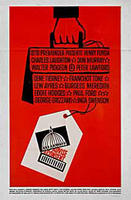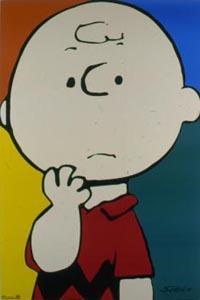 Besides those two standouts, though, it's remarkable many well-known movies screened in that series: To Kill a Mockingbird, Whatever Happened to Baby Jane?, The Miracle Worker, Days of Wines and Roses. Those were screened alongside cineaste classics like Ride the High Country and Bergman's Through the Glass, Darkly (technically a 1961 movie released in the US in '62).
Besides those two standouts, though, it's remarkable many well-known movies screened in that series: To Kill a Mockingbird, Whatever Happened to Baby Jane?, The Miracle Worker, Days of Wines and Roses. Those were screened alongside cineaste classics like Ride the High Country and Bergman's Through the Glass, Darkly (technically a 1961 movie released in the US in '62).It's a staggering lineup. And that year's made more impressive when you take my favorite movies from that year, Chris Marker's La Jetée and Godard's Vivre sa vie, into account. This, by coincidence, I ended up seeing a batch of movies from 1962, including The Exterminating Angel, Advise and Consent, Hatari!, L'eclisse in that new Criterion edition. That gave me an opportunity to put together a top 10 list for this year for my previous top 10s page. Long story short: while devising that list, I had to conclude that, yes, 1962 is one amazing year for movies, giving birth to this post. I mean, check out this lineup:

01. La Jetée (Marker)
02. Vivre sa vie (Godard)
03. The Manchurian Candidate (Frankenheimer)
04. An Autumn Afternoon (Ozu)
05. Advise and Consent (Preminger)
06. The Exterminating Angel (Bunuel)
07. Lawrence of Arabia (Lean)
08. Knife in the Water (Polanski)
09. Ride the High Country (Peckinpah)
10. L'eclisse (Antonioni)
11. Hatari! (Hawks)
12. The Man Who Shot Liberty Valence (Ford)
13. Cléo from 5 to 7 (Varda)
14. Harakiri (Kobayashi)
15. Le Doulos (Melville)
16. Sanjuro (Kurosawa)
17. To Kill a Mockingbird (Mulligan)
18. Days of Wine and Roses (Edwards)
19. Lolita (Kubrick)
20. Hell is for Heroes (Siegel)
Just off are movies like Sundays and Cybele, Whatever Happened to Baby Jane?, Carnival of Souls, Losey's Eve, and Pasolini's Momma Roma. And the above list doesn't include the various acclaimed movies I haven't seen like Cape Fear, My Name is Ivan, Family Diary, The Music Man, I Fidanzati, Two Weeks in Another Town, These are the Damned, Loneliness of the Long Distance Runner, Zatoichi, The Trial of Joan of Arc, etc.
You might wondering, is there an actual point to this post besides nerdy navel-gazing on the level of an Auteurist Zombie thread? Well, not really.
 But I'll posit a theory to avoid the stench of unmitigated navel-gazing: It's true that using these "greatest year" debates rely on something essentially arbitrary -- the calendar year as the time interval of measurement. It's probably more instructive to look at a "great" year as a peak of a golden period, a burst of creativity and accomplishment that might last anywhere from two to five years. 1962, like other commonly-cited great years such as 1955, 1974, or 1939, aren't flukes. Those years instead mark a crest in an uncommonly fertile period for movies. For me, the early 60s stand out as the peak period for cinema because it's at the nexus of a number of developments: you have the Nouvelle Vague just exploding on the scene, the "mature" (not quite "late") period of classic Hollywood auteurs, the transition point between the Old Japanese Masters and the Japanese New Wave, and the intersection of Italian neo-realism and the Italian new wave, and generally a much greater willingness on the part of filmmakers to tackle political material. The remarkably fecund early Sixties marked a transition from an art form's classical period to its modernist period, a tantalizingly brief window of time where Ford and Godard share movie marquees.
But I'll posit a theory to avoid the stench of unmitigated navel-gazing: It's true that using these "greatest year" debates rely on something essentially arbitrary -- the calendar year as the time interval of measurement. It's probably more instructive to look at a "great" year as a peak of a golden period, a burst of creativity and accomplishment that might last anywhere from two to five years. 1962, like other commonly-cited great years such as 1955, 1974, or 1939, aren't flukes. Those years instead mark a crest in an uncommonly fertile period for movies. For me, the early 60s stand out as the peak period for cinema because it's at the nexus of a number of developments: you have the Nouvelle Vague just exploding on the scene, the "mature" (not quite "late") period of classic Hollywood auteurs, the transition point between the Old Japanese Masters and the Japanese New Wave, and the intersection of Italian neo-realism and the Italian new wave, and generally a much greater willingness on the part of filmmakers to tackle political material. The remarkably fecund early Sixties marked a transition from an art form's classical period to its modernist period, a tantalizingly brief window of time where Ford and Godard share movie marquees. 1962 is the peak of that awesome period. That year included many elegiac, autumnal pictures like Ozu's last movie (appropriately titled) An Autumn Afternoon, John Ford's last great western Liberty Valence, Hatari!, which is probably the purest "Hawks movie" Hawks ever made, and his last great picture. Kubrick, Polanski, Bertolucci, Pasolini, and Peckinpah were just starting out, with both Polanski and Peckinpah making one of their very best. Bunuel made arguably his greatest picture The Exterminating Angel, the most potent lampooning of bourgeois dependence put on film. The two great modernist masters, Antonioni and Godard, were operating at the height of their powers. And the two most incisive, urgent political movies to ever come out of Hollywood were from this year: The Manchurian Candidate and Otto Preminger's compulsively watchable Advise and Consent, my pick as the most astutely observed movie about American politics ever made. And Jack Lemmon boozed it up and Bette Davis camped it up in two of their most memorable roles. It's a list filled with masterpieces and near-masterpieces, with some signature works by the artform's most luminous practioners.
1962 is the peak of that awesome period. That year included many elegiac, autumnal pictures like Ozu's last movie (appropriately titled) An Autumn Afternoon, John Ford's last great western Liberty Valence, Hatari!, which is probably the purest "Hawks movie" Hawks ever made, and his last great picture. Kubrick, Polanski, Bertolucci, Pasolini, and Peckinpah were just starting out, with both Polanski and Peckinpah making one of their very best. Bunuel made arguably his greatest picture The Exterminating Angel, the most potent lampooning of bourgeois dependence put on film. The two great modernist masters, Antonioni and Godard, were operating at the height of their powers. And the two most incisive, urgent political movies to ever come out of Hollywood were from this year: The Manchurian Candidate and Otto Preminger's compulsively watchable Advise and Consent, my pick as the most astutely observed movie about American politics ever made. And Jack Lemmon boozed it up and Bette Davis camped it up in two of their most memorable roles. It's a list filled with masterpieces and near-masterpieces, with some signature works by the artform's most luminous practioners.So there you have it: an airtight case for 1962 as the greatest year in movie history. Your favorite movie year just doesn't match up. Sorry, nerd.
